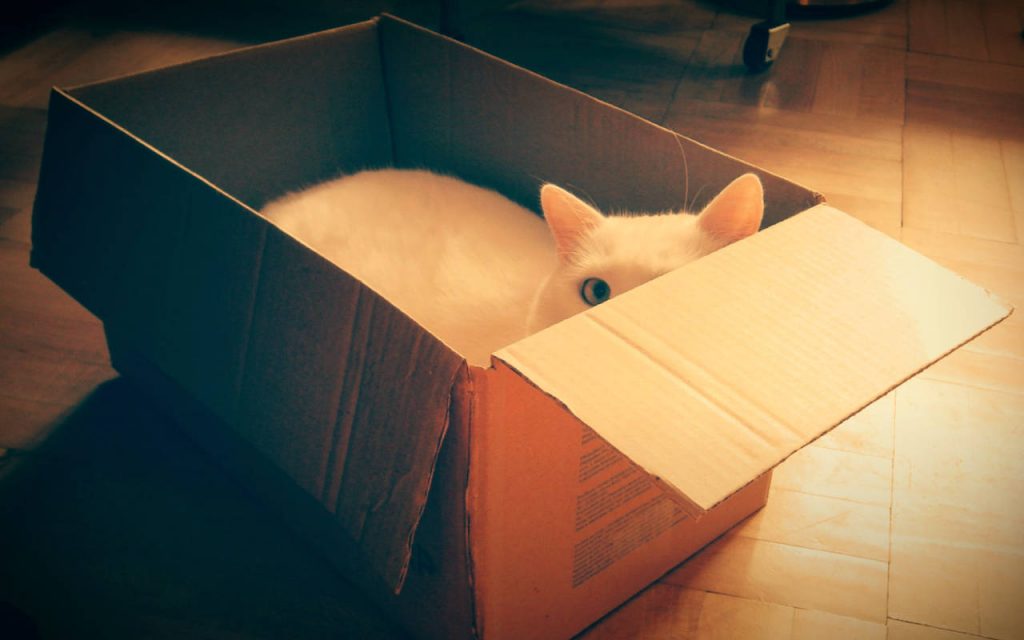Cardboard is an incredibly useful packaging material. Think about anything you’ve ever bought that came in a box: your TV, computer, and smartphone. Your medicines, flat packed furniture – even eggs.
It provides excellent impact protection for valuable contents in transit. Plus – that uniform, consistent shape means that packaged products can be stacked and shipped reliably, every time.
But the best thing about cardboard is how good it is for the environment… or is it?
You’d think that, environmentally-speaking, cardboard packaging versus plastic isn’t a fair fight. “Of course cardboard is better!”, we hear you cry. It’s recyclable, biodegradable, sustainable, and naturally-sourced. All the eco-brands use cardboard packaging, so it must be good for the planet. Right?
Well… Not really. But it’s much more complicated than that.
Packaging – whether cardboard, glass, plastic or cloth – is never really “good” for the environment. Each has advantages, disadvantages, use cases, environmental implications and cost implications that must be considered before casting judgement.
And in most scenarios, plastic packaging can actually be better on balance than cardboard.

Cardboard vs plastic: it’s not an easy win for cardboard
Cardboard seems more environmentally-friendly than almost any other type of packaging available. It has been advertised and marketed in such a way that it’s gained a “good guy”, eco image.
But to make it, trees have to be felled – lots of trees.
A single tree can make about 150 large boxes. But in the USA alone, 100 billion boxes are manufactured every year. That scale of production requires an ominous-sounding 666 million trees, every single year.
Of course, trees can be planted over and over, unlike the oil used to make plastics – but trees take decades to get to a size suitable for pulping and making cardboard. Land and habitats have to be cleared not just to fell trees, but to plant them in the first place.
Today, with FSC and Rainforest Alliance symbols on packaging, it’s easier to know if the raw material was sourced from sustainable plantations, grown specifically for manufacturing. But it’s not always clear if deforestation is a source for all cardboard products.
Making the material used to create cardboard is very water-intensive, and can be highly polluting to waterways. Bleaches and dyes must be used, which are often introduced to natural watercourses. The runoff can also introduce heavy metals – like lead and manganese – into fresh water.
Black liquor is the chemical byproduct of making wood into pulp for cardboard. By making one tonne of pulp, an astonishing 7 tonnes of black liquor are produced. This is usually processed into energy, burned for power by the paper mill – which contributes significantly to the mill’s overall air pollution.
Cardboard isn’t as clean and eco-friendly as it is marketed to be.
Read more: single use plastic alternatives
“Ah” you say, “but it’s totally recyclable!” – and yes, you’d be right to point that out. Cardboard is widely recycled – but recycling is also water-intensive, and can only be carried out about 7 times before the material has to be landfilled or incinerated.
The good news is that, unlined card and paper are biodegradable – but it’s a drop in the ocean after all the processing and pollution it took to make them.
The disadvantages of cardboard as packaging
So, cardboard isn’t the squeaky-clean green solution it’s often touted as. And even though it’s excellent for packaging, it does have some drawbacks.
Size and weight
Packaged products have to be moved, and transport comes at a cost. The lighter a packaged item, the less fuel is required to move it. The smaller a packaged product, the more items can be shipped at once – meaning fewer transport trips.
As an example, polythene bags for shipping can weigh just 2 grams, compared to an equivalent cardboard box weighing 100 grams. That’s a 98% weight saving – which is monumental at any scale. Imagine swapping 1 tonne of cardboard for just 20kg of polythene!
Poor sealing
When cardboard gets wet, it’s pretty much useless. All of its protective properties are destroyed. It offers little protection from the elements, and needs covering with plastic in transit to protect it. It’s also easier to tamper with cardboard boxes without being noticed by simply reassembling the box with new tape.
Choose the best solution for each packaging task
The thing is – no single packaging system is the perfect, one-size-fits-all solution.
You have to choose the right material or combination of materials for each task.
Polythene bags for clothes make more sense than cardboard boxes do. Cardboard boxes for TVs make more sense than simply bagging a flatscreen and shipping it.
But that TV still needs moisture protection, and is likely to be wrapped in polythene before boxing.
And that’s the ultimate solution; mixing materials to take advantage of their properties, while minimising weight, size – and ultimately, the burden on the environment.
Packaging can become more sustainable if we continue to design it well, recycle it always, and innovate to find new ways forward.
NPF Packaging: your packaging specialists
Talk to our friendly polythene experts at NPF Packaging – and start your order for fully recyclable polythene packaging solutions. We’ll deliver your polythene bags, sheet, tubing, wraps and liners – to meet your exact needs. Get a quote now, or call us on 01773 820415.


